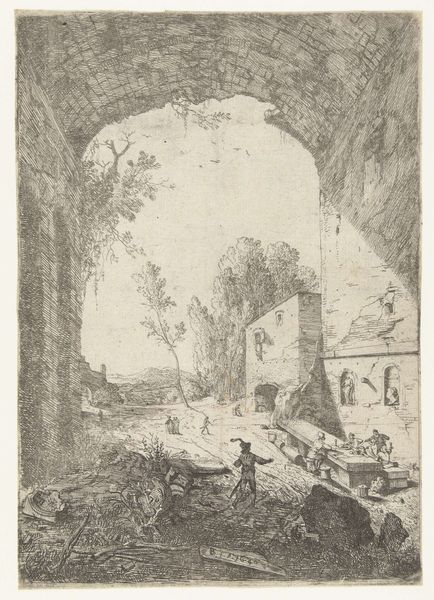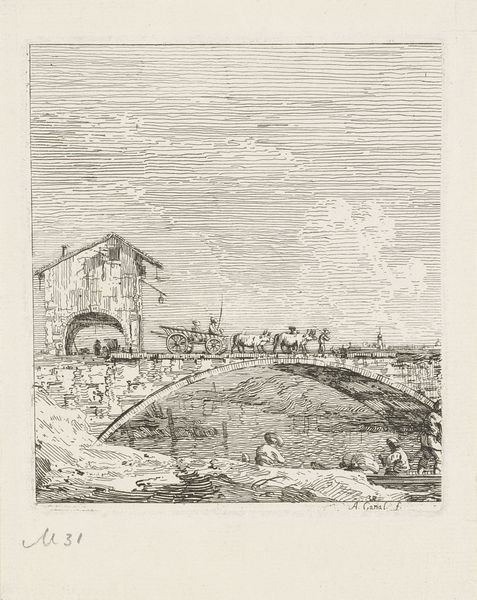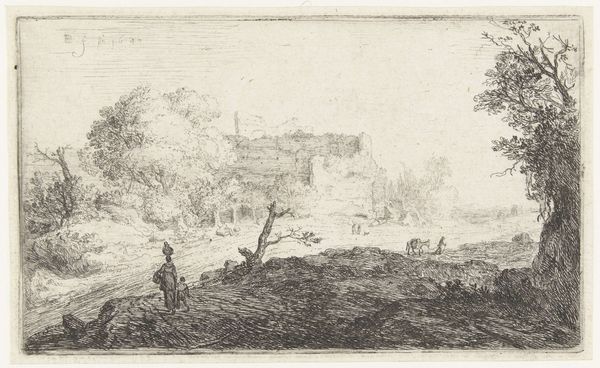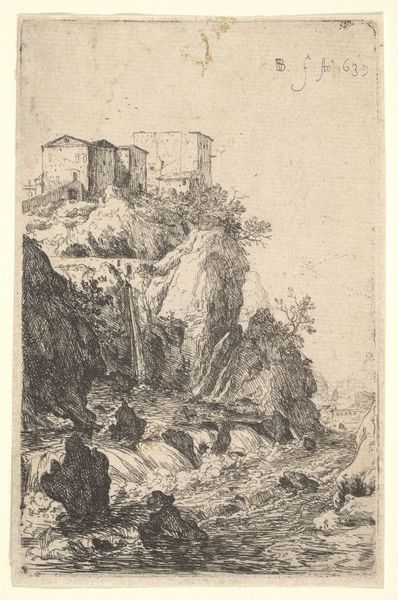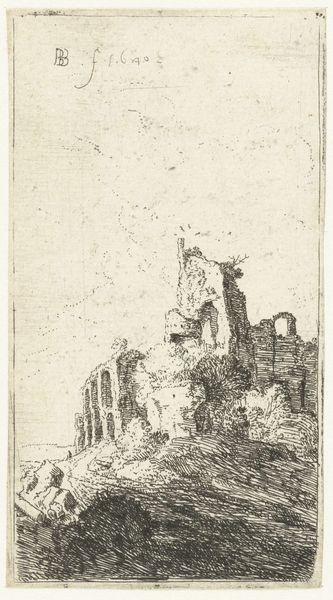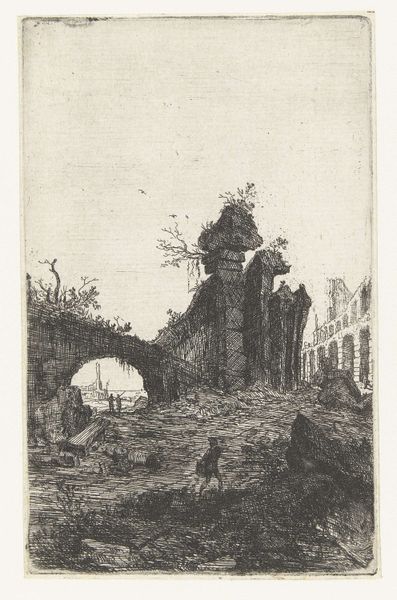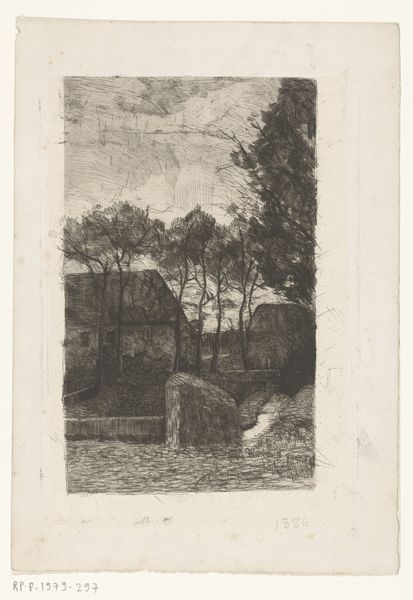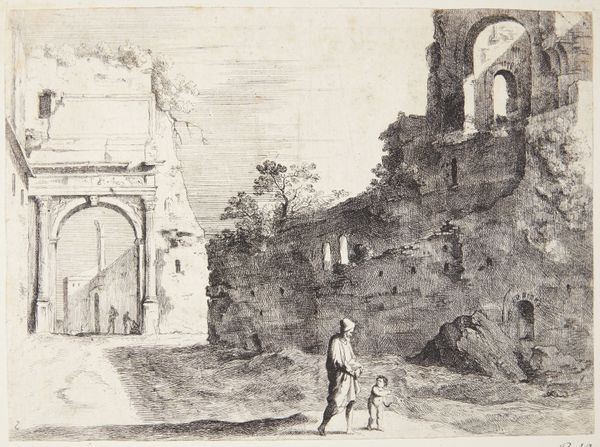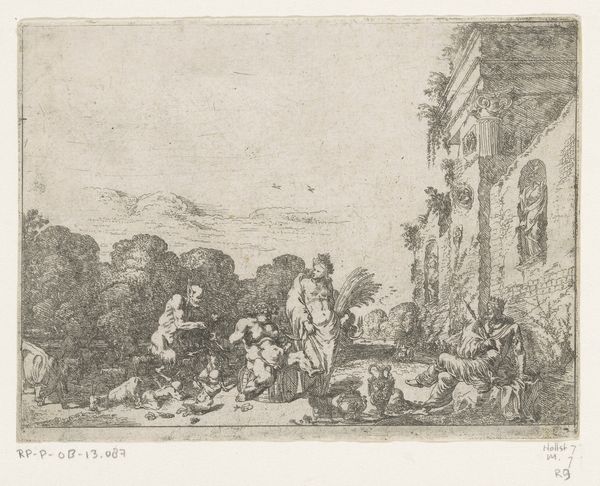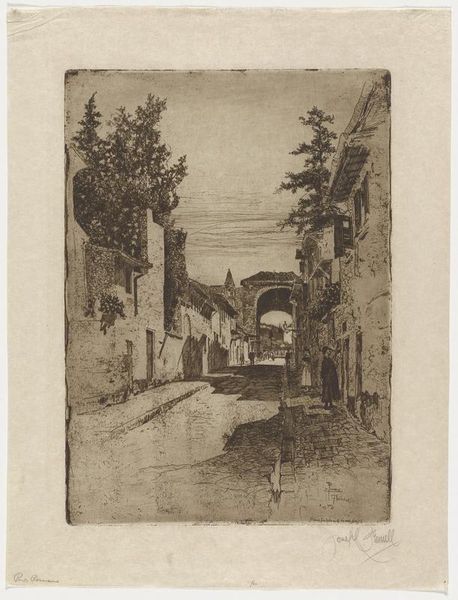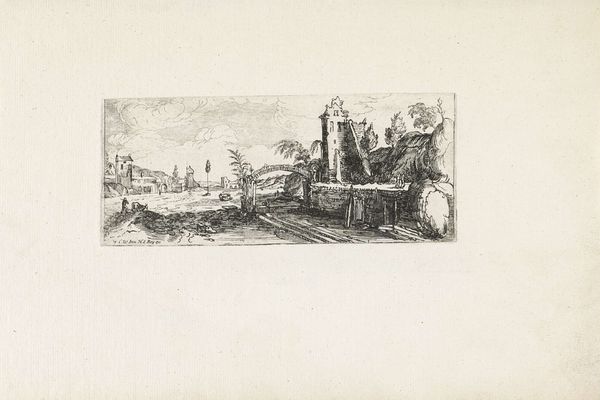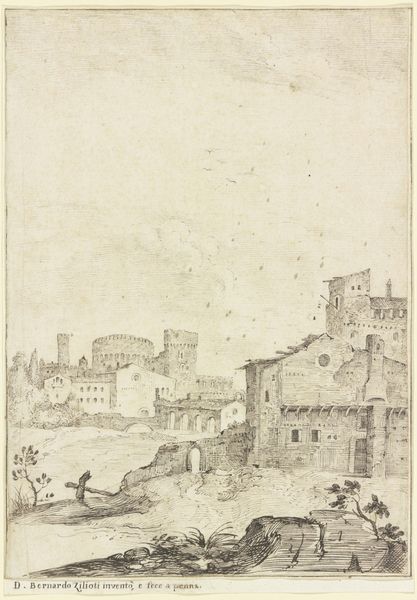
drawing, ink, engraving
#
drawing
#
baroque
#
pen sketch
#
pencil sketch
#
landscape
#
ink
#
cityscape
#
history-painting
#
engraving
Dimensions: height 104 mm, width 64 mm
Copyright: Rijks Museum: Open Domain
Curator: This is Bartholomeus Breenbergh's 1640 ink and wash drawing, "Ruins of the Aqueduct of Mezza Via near Rome." It’s a detailed, evocative cityscape. Editor: The texture is immediately striking; so much detail rendered with what seems like very economical means. There’s a roughness, a kind of deliberate un-prettiness. Curator: Breenbergh was part of a wave of Dutch and Flemish artists drawn to Italy, captivated by the classical ruins. They weren't just documenting; they were interpreting Rome’s decline and grandeur. The city had powerful resonances with the politics of imagery. Editor: Yes, it isn't a straightforward rendering. Note how the aqueduct's crumbling brickwork and arches dominate the composition. The artist highlights material decay but the mark-making is still quite intricate, calling attention to the labor involved in even such a 'quick' sketch. The artist’s hand is clearly present, carefully working across the surface. Curator: Think about who was commissioning and buying these works, these images of grand decay. The ruins signified the transience of power, a constant theme for an elite concerned with legacy and the passage of time. Breenbergh, although Dutch, had his own artistic position and legacy, fostered by the social sphere he was in. Editor: And he captured something crucial about the physical presence of ruins. These structures aren't just remnants, they're raw materials undergoing transformation. It suggests both decay but also raw building blocks for potential use. Note, the laborers present almost salvaging components of the original architecture. Curator: These pieces circulated within a culture grappling with its own historical weight, and imagining its place in relation to these towering empires. Editor: Exactly. It’s a social artifact presented as an architectural view. The artistic method and materials transform literal ruins into objects laden with complex value and cultural weight. The artist leaves his mark both figuratively and literally. It is fascinating to consider. Curator: It gives us a different appreciation of historical understanding.
Comments
No comments
Be the first to comment and join the conversation on the ultimate creative platform.
